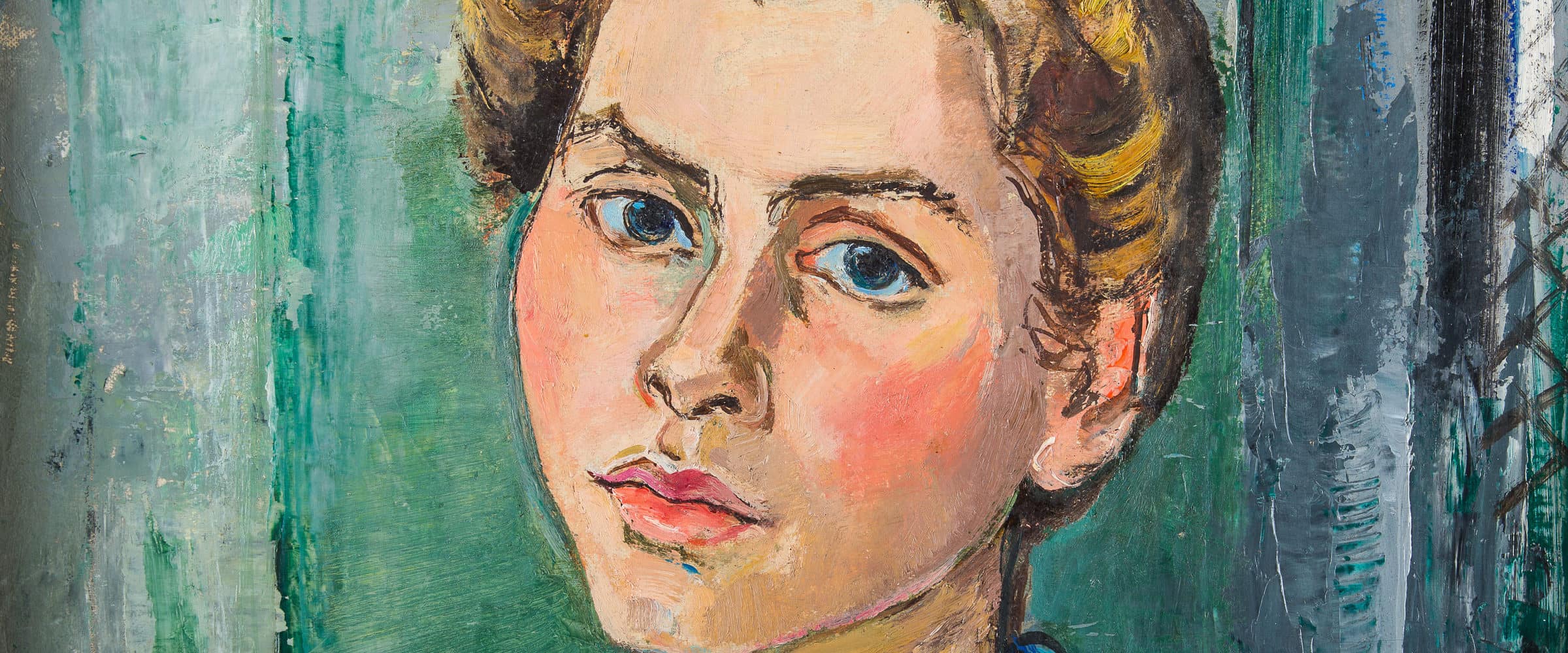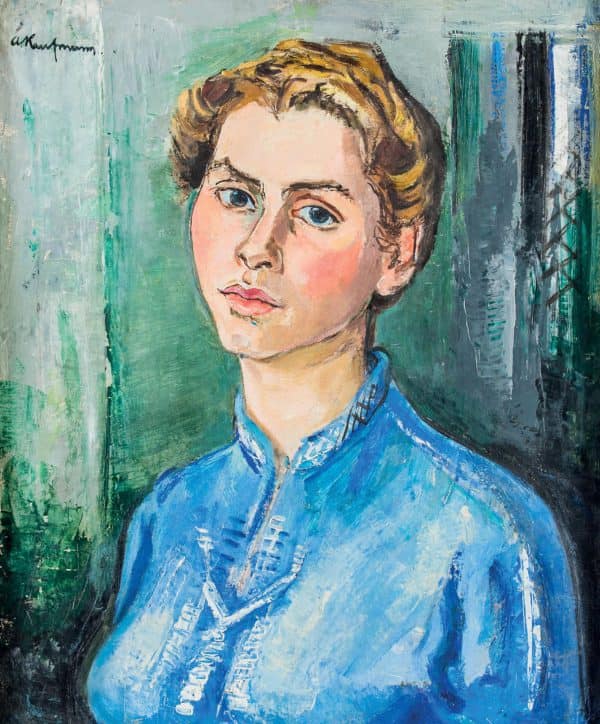

Arthur Kaufmann studied painting under Peter Johann Theodor Janssen at the Dusseldorf Art Academy from 1905 to 1906. He then moved to Paris to continue his studies at the Academie Julian, after which he visited Brittany, England and Italy. He returned to Paris in 1913, where he studied for several months under Henri Le Fauconnier. That year, he was already exhibiting in the gallery of Alfred Flechtheim in Dusseldorf. Kaufmann served in the First World War until 1918 and thereafter returned to Dusseldorf. He set up the Young Rhineland artists’ association together with Herbert Eulenberg and Adolf Uzarski, and he belonged to the circle of artists around Johanna Ey. In 1920, Flechtheim dedicated a solo exhibition to him. In 1922, Kaufmann organised the “First International Art Exhibition” with other artists from the Young Rhineland, Uzarski and Gert Wollheim. In 1929, Kaufmann was the founding director of the City School of Decorative Painting in Dusseldorf.
Kaufmann was driven out of his post in 1933 for anti-Semitic reasons. He went into exile, settling in Scheveningen in the Netherlands. He was the first artist whom the Nazis sacked in Dusseldorf. His family followed him into exile. Kaufmann spent three years in Scheveningen, where he ran a guest house. He visited friends in New York in 1935, then emigrated to the United States in 1936. He was able to do this because the composer George Gershwin stood surety for him. Kaufmann earned his living in New York by painting the portraits of American personalities and German exiles. In 1938, Kaufmann began work on his triptych “Artists and scientists who found sanctuary in the USA”, and brought together 38 portraits to make a group picture. These included Albert Einstein, Thomas Mann, Max Reinhardt and George Grosz. But he did not finish this work until 1964, when it was called “Spiritual emigration”, and made him well known. In 1944, Kaufmann became an American citizen. He did not visit Germany again until 1953. Kaufmann died in 1971 while visiting his daughter Miriam Etz in Nova Friburgo in Brazil.
